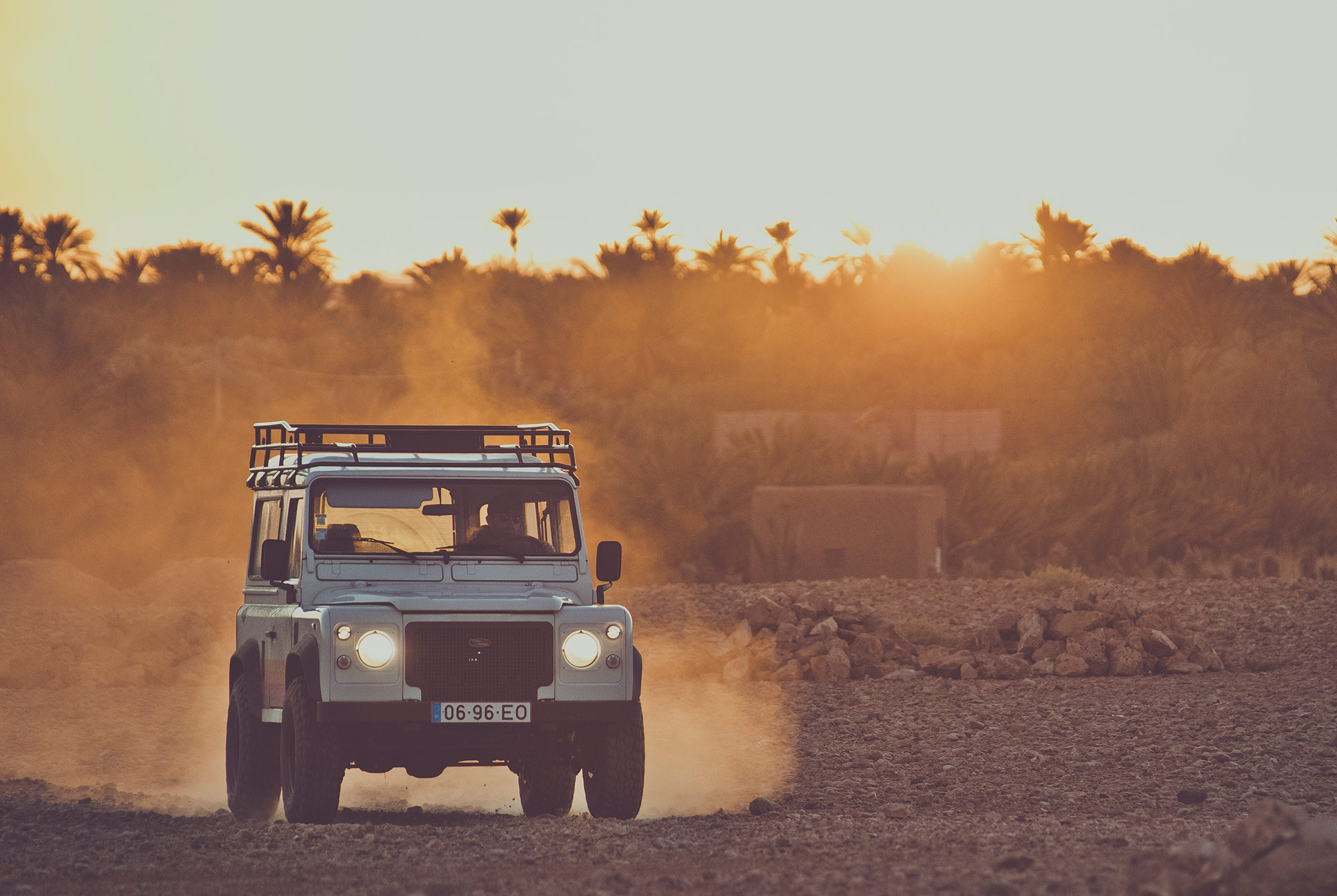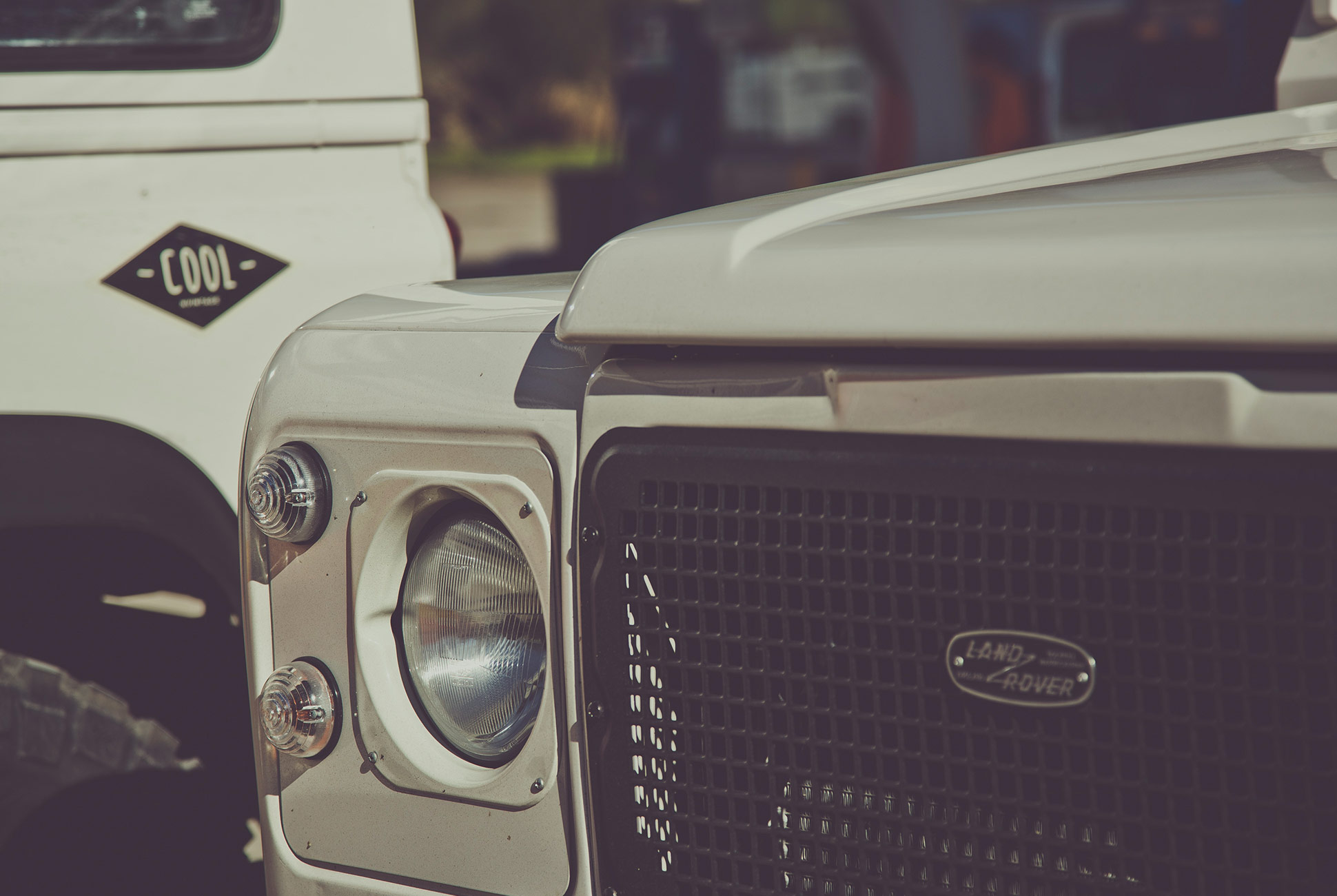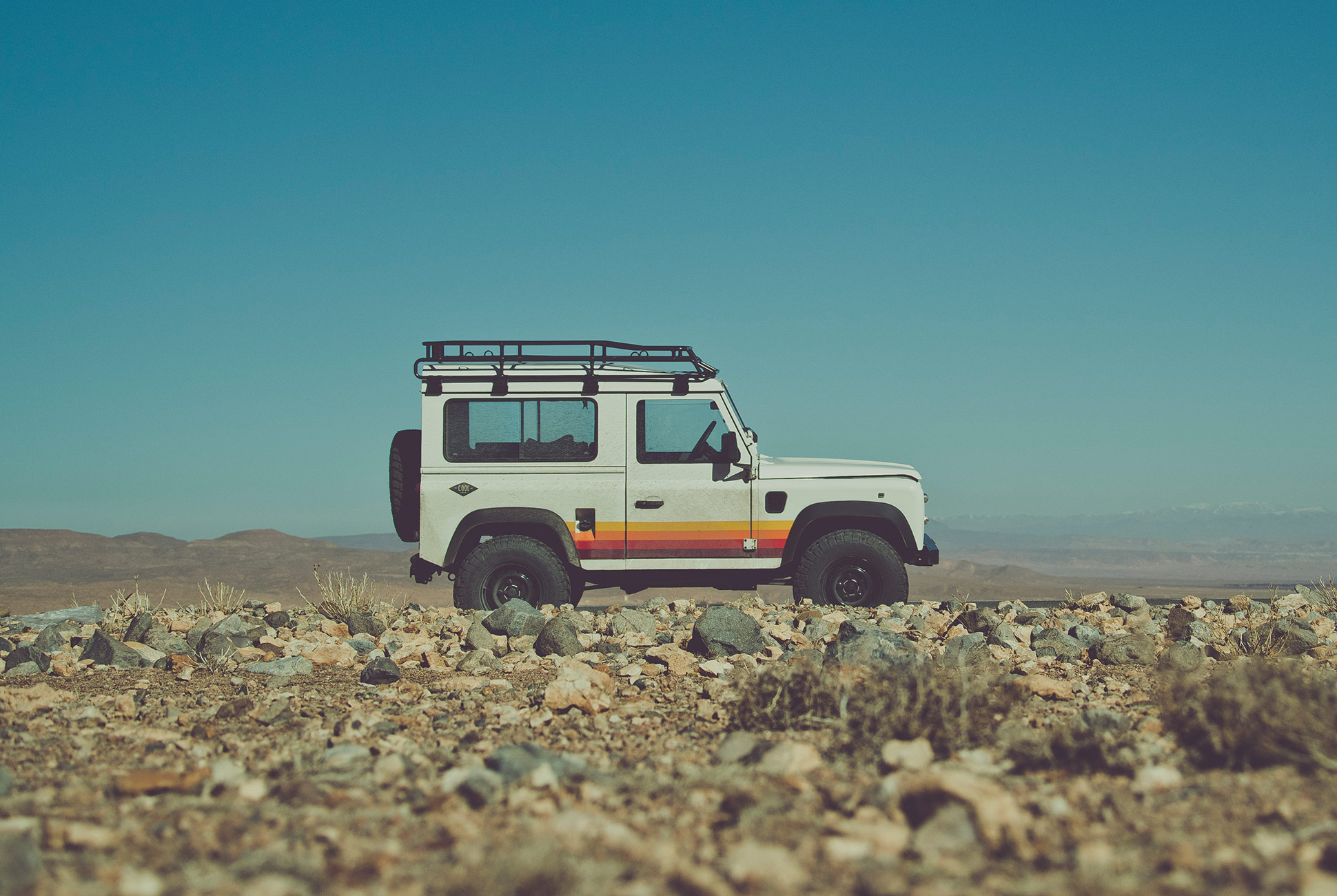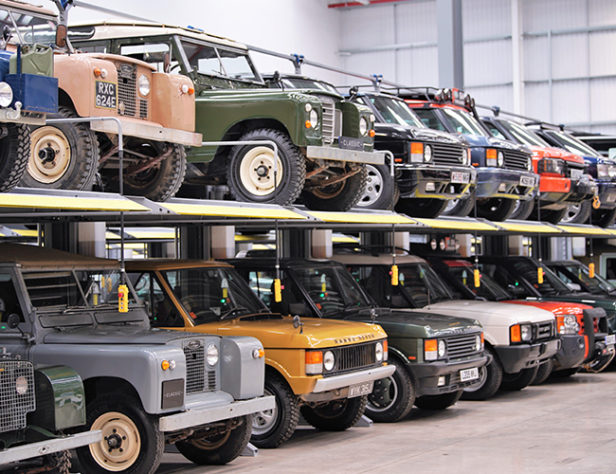“S
inuhe, we are in Morocco. If anything happens we’ll just take a taxi back to Lisbon. Portuguese style.” This is what Ricardo Pessoa said quite matter-of-factly after I quizzed him about any spares and recovery gear that might be in the back of the 1994 Cool N Vintage Resto-Mod D-90 we were driving across Morocco. I am used to the full arsenal of what-could-go-wrong contingencies being packed into the back of my truck, but that was not the case here. And “Portuguese style” was a phrase I would become very accustomed to in the next few days.
I’d spent the previous 48 hours flying from Los Angeles to Tangiers, then hopping in one of those taxis Ricardo mentioned, riding it to Chefchaouen — two hours through fields of olive trees to the mountains south. The rain had started coming down when the cab driver dropped me off outside the city walls. My French and Arabic were about as good as the driver’s English and Spanish, so I darted across the bridge with loose directions to my hotel. This was mid-January, off-season in Morocco, and the narrow streets were empty, its signs only in Arabic. It took me…more than a minute to find the hotel.

Ricardo drove from Lisbon to meet me and wasn’t due in until past midnight; he took the Ferry across the straights of Gibraltar with two Land Rover Defender 90’s in tow. Our plan was to drive over the Atlas Mountains and then south through the Sahara, looping back over the Atlas range into Marrakech. And while I was exhausted from the travel, I could barely sleep: driving a Land Rover on the continent of Africa had long been a dream of mine. So I sat with a steaming plate of vegetable and lamb tagine in a damp hotel located deep within an ancient village, only hours away from fulfilling that dream.
The morning was clear and the narrow blue corridors of Chefchaouen came alive with the sound of the morning prayer. The smell of burning wood and fresh baked bread wafted into my window. The clouds revealed lush green mountains — something I wasn’t expecting in this part of the world. (I later learned that the region was known for its cannabis cultivation.) As we drove east, the topography morphed from verdant green hills to the pine-covered Atlas mountains.
And as we reached our 12th hour behind the wheel, we came to a roadblock. Backtracking added two hours and 150kms to our already long day.
Once we were underway, from the start the trip didn’t always go according to plan. And as we reached our 12th hour behind the wheel, we came to a roadblock and were told that the route over the mountain pass was closed due to a snowstorm. Backtracking added two hours and 150kms to our already long day.
The western edge of the Sahara is marked by small villages, all connected by a modern highway built to spur tourism in the region. To the east, the vastness of the Sahara spread across the horizon, while to the west the Atlas Mountains sat covered in snow, highlighting the visual paradox of the area.
Our pace was extraordinary as we moved through the desert behind the wheel of Land Rover Resto-Mods. In other parts of the world we are consumed with the efficiencies of travel, how fast can we get to the next place. Here we were cruising along without urgency, pulling over to explore a side canyon or photograph the incredible vistas.

We rolled into Merzouga in the dead of night. This outpost on the edge of 100-meter high dunes is mostly a tourist attraction where volcanic black sand meets with the orange sands of the desert. This is the traditional land of the Berbers and their nomadic cousins the Tuareg. Driving through the dirt tracks, we passed camels tied to stakes in the ground and the odd date palm. Hidden under the blanket of the inky sky were the mythical sand dunes of the Western Sahara.
We were staying in nice places that Ricardo had researched on previous trips, as he had been making this trek into Northern Africa since 1998. By our third night, I was well-adjusted to the time difference and we had sunk into a rhythmic hotel check-in routine: upon arriving, we would dump our gear, grab a quick shower and reconvene in the restaurant for a drink. Morocco is a Muslim country, so the cocktail menu is usually pretty limited to Moroccan beer and wine. If you were really lucky there would be Crown Royal, or maybe Johnnie Walker. Over these drinks, we’d rehash the day, share the photos we took and wait on our food.
There is a stillness once you are in the dunes — a quiet like a snowy forest. The tires barely make a noise and all that could be heard was the thump of the 300tdi engines pulling us along.
The morning after our night in Merzouga, I made my way to the dining room in our hotel, anxious to get on the sand. Ricardo had arranged some pastries and coffee for our pre-dawn departure. When he originally asked me to join him on the trip I was expecting to be camping across Morocco; this whole ‘having breakfast made after rolling out of a warm bed’ procedure was nice. I was starting to understand Portuguese Style.
Ever since I was a child, the dunes of the Sahara have held a fabled place in my mind. So many great films came to mind: Michelangelo Antonioni’s The Passenger with Jack Nicholson, Werner Herzog’s Fata Morgana and of course Star Wars and Lawrence of Arabia.
We arrived at the base of the dunes just as the sun was creeping over the eastern horizon. The wet conditions made for nice compact sand and we only had to air down our tires to 21psi (or 1.5 Bar) to progress. There is a stillness once you are in the dunes — a quiet like a snowy forest. The tires barely make a noise and all that could be heard was the thump of the 300tdi engines pulling us along.
Driving large dunes takes a good deal of finesse and the ability to route-find on the fly. There is no direct route anywhere; you follow your instincts and hope you don’t get boxed in. It’s also exhausting. The driving and route finding physically wears on you. And that’s if you don’t get stuck — like we did.

When one of the 90s finally did get high-centered trying to crest a dune, it was easy enough with a snatch strap and two D-rings to yank it out and back on track. This was finally pure Portuguese Style; finally, I was starting to not only understand but to appreciate it. Our trucks were light on gear: no winch, no rooftop tent, no refrigerator, no pelican case full of spare parts or tools. It was like motorcycle touring but with Land Rovers — all we really needed was a credit card.
Ultimately, there was something gratifying driving about through ornate archways into Palais Mehdi in Marrakech with two dirty trucks. Three stately Dalmatians were posted by the gates guarding our hotel’s all-black fleet of Mercedes. We were greeted with fresh lemonade and showed to our suites. A perfect, satisfying end to our Portuguese Style trip.
Cool N Vintage Land Rover Defenders
1994: hard top
1996: soft top
Engines: 300tdi
Restored: using all OEM parts
To be used: as pictured – these aren’t garage queens
Any owner can send their 10-year-old-plus car in for thoroughly modern service. Read the Story


